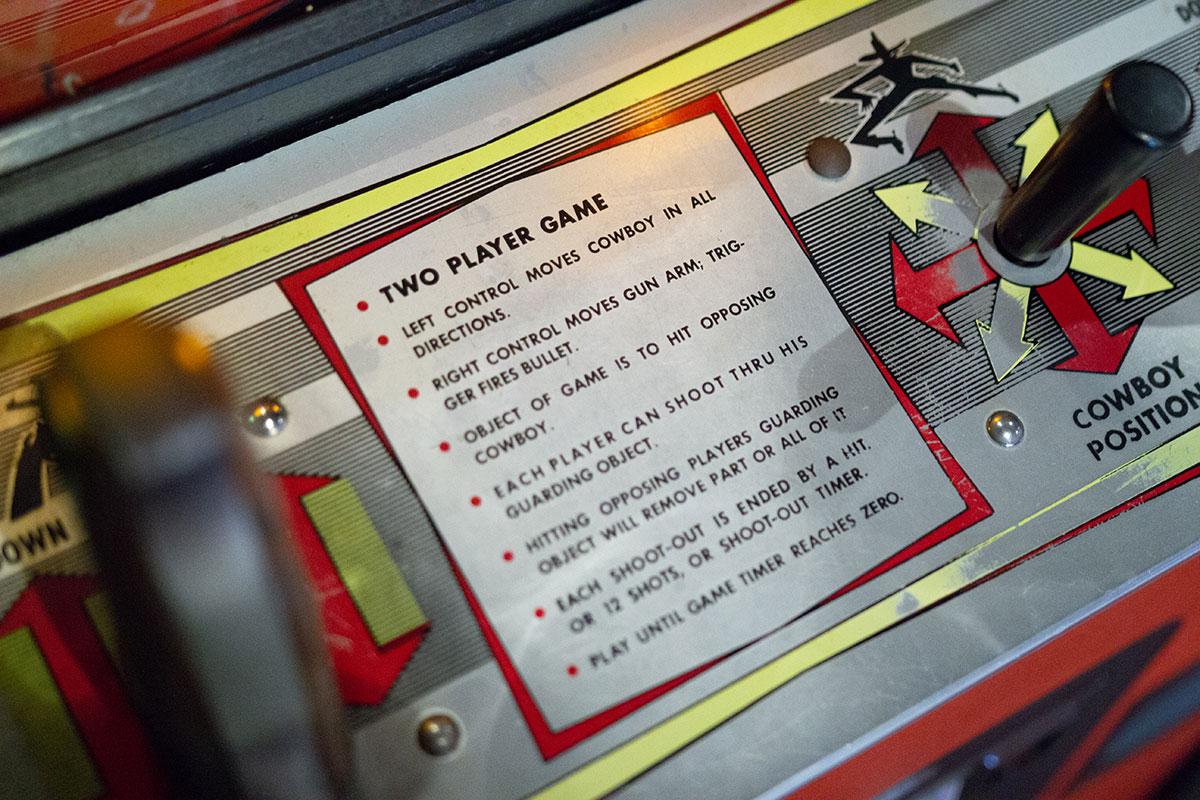
Date:
You’re a cowboy in the Old West, looking to rack up points by shooting it out. Sounds like a pretty typical video game, right? Not so fast, pardner.
Gun Fight, an arcade video game released by Midway Games way back in 1975, was a pioneer—the first game to use a microprocessor, the first to depict a gun, and the first to have dual twin joysticks, among other claims to fame. You can see and play the game (along with many others) in Game Masters: The Exhibition on view at The Franklin Institute through September 3, 2018.
First released as Western Gun in Japan, Gun Fight debuted in the U.S. with a significant change. Western Gun, like other early games, was based on discrete logic, which means it used separate, individual electrical components. Gun Fight’s utilization of a microprocessor—an integrated circuit, or microchip, that contains all the functions of a central processing unit—meant smoother animation and better graphics. Today’s video games still use microprocessors.
Gun Fight/Western Gun, which could be played by one or two players, was also the first game to depict human-to-human combat, a staple in video games today. It was also the first game to depict a firearm. Players are Old West cowboys armed with revolvers. They square off in a duel, with whoever hits the other first winning the most points. (The shot cowboy cries “Got me!” before collapsing.)
The game was also the first shooter game to utilize two joysticks—one for moving the cowboy and one for shooting, as well as the first game known to use characters and story fragments and one of the first to incorporate the synthesized electronic music.
Also in Game Masters: The Exhibition
Space Invaders
This fixed shooter game, released by Midway in 1978, was the most successful game of its day, credited with helping usher in the “golden age of arcade video games.” The familiar pixelated aliens (which players must destroy with a laser) are still referenced today.
Asteroids
Released in 1979, this space-themed shooter became Atari’s best-selling arcade game ever. Players (in spaceships, naturally) must dodge asteroids and flying saucers while shooting to destroy them.
Missile Command
Released in 1980, this Cold War-inspired shooter from Atari was one of the first games to use a trackball. Players must defend six cities from incoming nuclear missiles by launching counterstrikes.
Pac-Man
This hugely successful game, released by Midway in 1980, veered away from shooting and created a new genre: the maze chase game. Designer Toru Iwatani said he wanted to attract more girls to gaming with Pac-Man, in which players steer the iconic yellow figure through the maze to eat Pac-Dots while trying to avoid deadly ghosts.
Centipede
Atari’s popular 1980 shooter pits players against descending centipedes, spiders, and other creepy-crawlies. It was co-created by Dona Bailey, one of the few female programmers in the industry at the time.
Donkey Kong
One of the first platform games, this 1981 release from Nintendo introduced a franchise that’s still going strong today. It also gave us Mario, one of the most popular game characters of all time. In Donkey Kong, the great ape is the bad guy, squaring off against Mario.
Defender
This 1981 space shooter from Williams Electronics is unusual in that the game scrolls horizontally, not vertically. Players shoot to defeat aliens and defend astronauts on an unnamed planet’s surface.
Scramble
Released by Stern in 1981, Scramble is a horizontally scrolling shooter. Players steer a rocket ship through six distinct levels, firing lasers and dropping bombs to defeat the enemy.
Tempest
In Atari’s groundbreaking first full-color vector game, released in 1981, players control a starship named Blaster and attempt to repel invading aliens. It’s considered a third-person shooter, in which the player’s character is visible in the game.
Robotron: 2084
This 1982 shooter from Williams Electronics is credited with popularizing the dual joystick controls first used in Gun Fight. Players must defeat evil robots and rescue fellow humans.
Xevious
Atari’s vertically scrolling 1982 shooter was the first arcade video game to have a TV commercial (“Are you devious enough to beat Xevious?”) and the first to make use of pre-rendered graphics. Players fly an aircraft over forests, enemy bases, and other areas, dodging the enemy.
Elevator Action
This colorful mix of platform and shooter games was released in 1983 by Taito. Players are spies who must evade enemy agents in a 30-story building.


